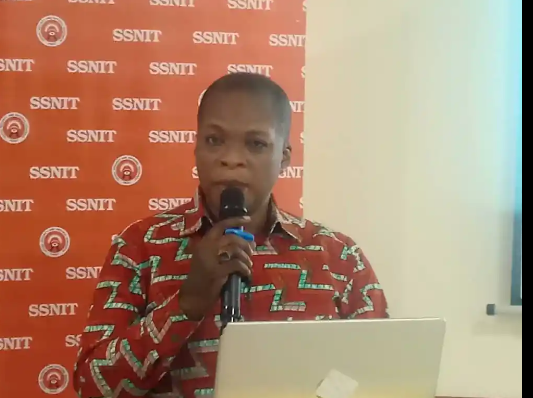Previous reports by the International Labour Organisation (ILO) have recommended that the Social Security and National Insurance Trust (SSNIT) increase the contributions of its members to ensure sustainability.
Speaking to JoyNews, SSNIT's Chief Actuary, Joseph Poku, said although it was a great suggestion, SSNIT must follow some laid-down procedures before it can enforce any new increase beyond the current 18.5% of workers' pay from their basic salary.
“This report is not different from the reports that we have obtained over the years. Like I said it gives you an idea of where you are going as a scheme and then you take proactive measures to steer off if there is any danger that is exactly what it does.
“What has run through all these reports is the need for an increase in contribution rates. In all the previous reports that is what it says...that we need to increase the contribution rate. Let me mention that it is not easy to increase contribution rates.
"It means the law has to be changed, we need to engage stakeholders, we have the employers, we have the workers, and as a group, we have our regulator and then even Parliament and governments.
“So it goes through a process and that process is a bit long. So after SSNIT has even made some of these proposals we are not going to engage NPRA and then we get the stakeholders like employers because they are also going to be affected. They are going to pay their parts,” he said.
ILO report also projected a complete depletion of SSNIT’s reserve by 2036 in an actuarial valuation study of the SSNIT viability.
According to ILO, total income including contributions, investment income and other income, will no longer be sufficient to pay for annual expenditures including benefit payments to pensioners by 2029.
“Starting in 2029, total income (contributions, investment income and other income) is no longer sufficient to pay for annual expenditures. The reserve starts to decrease. During the year 2036, the reserve drops to zero” the research emphasised.
But, Mr Poku said this was only a prediction adding that there was no need for unrest.
He explained that the study, done every three years as required by law, gives an overview of the scheme's status, assets and liabilities.
Additionally, it provides the management with ideas on measures to take to ensure the sustainability of the scheme.
Mr Poku recounted several cases where similar projections were made, including a 2011 report that predicted SSNIT would be unable to pay funds by 2019.
“The recommendations are not going to happen at all costs, that's not what it is. So it gives you an idea that based on these assumptions, it's likely to happen but there is no certainty. So, in 2011, it was projected that the scheme reserved will run or will be depleted."
"The report (2011) says, among other things, that if contribution rates were not increased in the future, the annual expenditure on benefits and registration would exceed income from contributions and the funds from 2019 would just tank," he said.
Latest Stories
-
Expansion Drive: Takoradi Technical University increases faculties
3 hours -
SHS heads demand payment of outstanding funds before reopening of schools
4 hours -
We thank God for the 2024 general elections – Akufo-Addo
4 hours -
Coconut Grove Beach Resort marks 30 years of excellence with memorable 9 lessons & carols service
4 hours -
WAFU B U-17 Girls’ Cup: Black Maidens beat Nigeria on penalties to win inaugral tournament
5 hours -
Real Madrid beat Sevilla to keep pressure on leaders Atletico
6 hours -
Liverpool put six past Spurs to go four points clear
6 hours -
Manchester United lose 3-0 at home to Bournemouth yet again
6 hours -
CHAN 2024Q: ‘It’s still an open game’ – Didi on Ghana’s draw with Nigeria
6 hours -
CHAN 2024Q: Ghana’s Black Galaxies held by Nigeria in first-leg tie
7 hours -
Dr Nduom hopeful defunct GN bank will be restored under Mahama administration
8 hours -
Bridget Bonnie celebrates NDC Victory, champions hope for women and youth
8 hours -
Shamima Muslim urges youth to lead Ghana’s renewal at 18Plus4NDC anniversary
9 hours -
Akufo-Addo condemns post-election violence, blames NDC
9 hours -
DAMC, Free Food Company, to distribute 10,000 packs of food to street kids
11 hours

